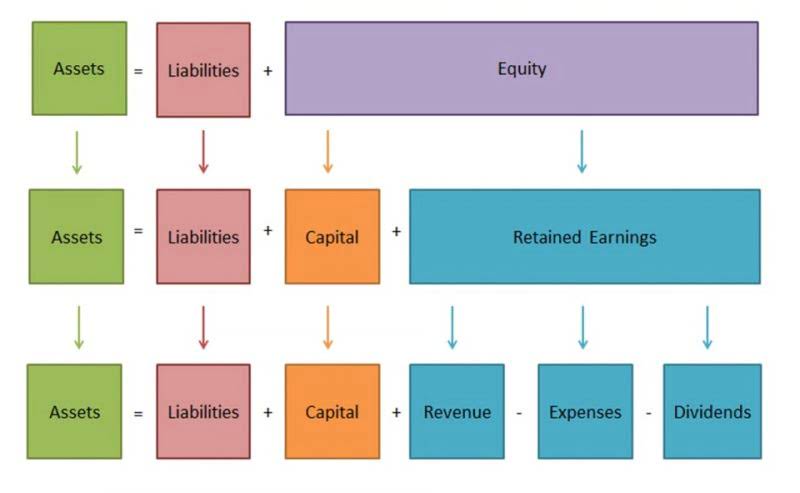
With AP automation, employees don’t have to manually enter the appropriate general ledger account code for each transaction. Instead, finance or AP teams can set up a structured list of GL codes to categorize different types of expenses. By preparing a trial balance, you make sure your accounting is correct before creating financial statements for the accounting period in question.
Unbalanced journal entries and incorrect account classification

Below is a break down of subject weightings in the FMVA® financial analyst program. As you can see there is a heavy focus https://www.bookstime.com/ on financial modeling, finance, Excel, business valuation, budgeting/forecasting, PowerPoint presentations, accounting and business strategy. The best solution to solving the challenges mentioned above is automating GL coding. RPA tools learn your GL coding practices as a base and automatically assign correct GL codes and cost centers to your invoices.
Does a general ledger use double-entry bookkeeping?
However, there are some common errors that can occur when performing general ledger accounting. It is important to ensure that the subsidiary ledger accounts and control accounts are reconciled regularly to ensure accuracy and completeness of the information recorded. In bookkeeping, a general ledger account is used to keep track of all financial transactions that occur during a specific period. Each transaction in the general ledger account is recorded in two accounts, known as ledger accounts. One account is debited, and the other is credited, ensuring that the accounting equation remains balanced. The general ledger account contains all the transactions of a company, including assets, liabilities, revenue, expenses, and equity.
How long should general ledger records be retained?
It also details the amount you pay to the creditors as well as the outstanding amount. Besides this, you can refer back to the purchase details in case you need to so in the future. Say you own a publishing house, Martin & Co., and purchased 20kg of paper on cash at $20 per kg on December 1, 2020. Therefore, the following is the journal and ledger that you need to record into books for such a transaction. For example, when you detect an inconsistency in the financial records, contact the client to verify it.

In the past, the general ledger was literally a ledger—a large book where financial data was recorded by hand. But since bookkeeping by hand takes 1,000 times longer, most business owners and bookkeepers use accounting software to build their general ledgers. Once all transactions are recorded, it’s time to make sure the books balance. If they don’t, you’ve got yourself a mystery to solve—time to put on your detective hat and look for errors or omissions. Every financial transaction that you record is called a journal entry, and those journal entries are kept Statement of Comprehensive Income in your general ledger.
- This is because you, or an accounting professional, are no longer required to go through the pain of recording the transactions in the journal first before transferring them to the ledger.
- This means that you don’t need to look through bank statements, invoices, or credit statements for a specific transaction when you have the general ledger at your disposal.
- It would lead to improper budget allocation and non-budgeted and unaccounted expenses.
- A general ledger, or GL, is a record of your company’s financial transactions, summarizing all accounts in one place.
- It’s hard to overstate the importance of general ledger codes in finance and accounting.
How To Create A General Ledger?
The general ledger is, once again, a generalized, ongoing account of all accounts at a company. As such, general ledgers include everything, including income-related transactions. That means general ledgers record accounts corresponding to journaled income statement and balance sheet entries.
- For instance, if a business purchases $500 worth of inventory, the general ledger would record $500 as a debit in the inventory account and $500 as a credit in the cash account.
- The general ledger is the central accounting record containing all of an organization’s financial transactions.
- A general ledger contains information related to different accounts, providing information that helps you in preparing your business’ financial statements, including income statements and balance sheets.
- It tracks and summarises all financial transactions, providing a complete overview of your company’s financial status.
General Ledger Format

Asset accounts are used to track a company’s assets, such as cash, inventory, and property. Meanwhile, liability accounts are used to track a company’s debts and obligations, such as loans and accounts payable. The General Ledger consists of a chart of accounts that lists all of the accounts used by a company. Each account has a balance that is updated each time a transaction is recorded. This system ensures that every transaction has two entries, one debit and one credit, which must balance each other out. This ensures that the General Ledger Account remains accurate and up-to-date, providing a clear picture of an organization’s financial position.
This mitigates the risks that Centralized General Ledgers have from having one source control the ledger. The image below is a great illustration of how the blockchain distributed ledger works. GL coding can also help you control costs by allowing you to analyze how the monthly spending of a department stacks up against its annual budget.
- To do so, learning about fundamental accounting concepts – first of all – is a must.
- The purpose of a general ledger is to centralize & organize financial data, recording all transactions in a systematic manner.
- The income statement will also account for other expenses, such as selling, general and administrative (SGA) expenses, depreciation, interest, and income taxes.
- These accounts should zero out monthly, and persistent balances show unresolved reconciling items requiring investigation.
- In other words, a ledger is a record that details all business accounts and account activity during a period.
- When expenses are not categorized uniformly, management might draw incorrect conclusions about spending patterns and performance, which can lead to flawed decision-making.
- Now, let’s break these down like a box of chocolates (only with fewer calories).
By comparing the total debits and credits, a business can quickly identify if there are any errors or imbalances in their accounting records. This reconciliation process ensures the integrity of the general ledger and the financial reports generated from it. It serves as a critical step in the overall accounting process, allowing businesses to identify and rectify any discrepancies before finalizing their financial statements.
These errors can have a significant impact on the accuracy of financial statements and can lead to incorrect decision-making. This process involves comparing the transactions recorded in the GL account with the corresponding transactions in the subsidiary accounts to identify any discrepancies. The software also allows businesses to generate reports that provide a detailed view of their financial position. They allow for easy monitoring of account balances and can help identify errors or discrepancies in the subsidiary ledger. Any accounts not in these ledgers such as asset, liability, and capital accounts remain in what is a gl account the general ledger. As with the main ledger, postings to the subledgers are from the books prime entry.




